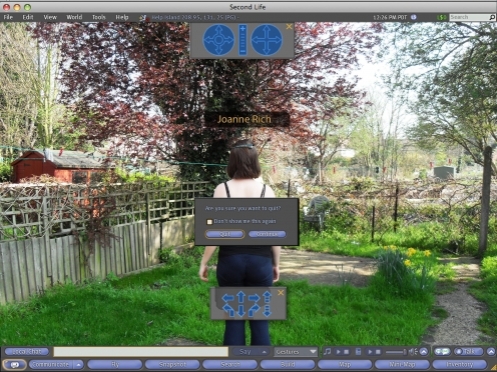Having decided to conduct an experiment in the web based 3D environment Google Street View, I researched the work of Thompson and Craighead, who have produced many projects using on online technology.

“Much of their work to date explores how technology changes the way we perceive the world around us. They use live data to make artworks, including “template cinema online artworks” and gallery installations, where networked movies are created in real time from online material such as remote-user security web cams, audio feeds and chat room text transcripts.” 2
Weather Gauge collects numeric information from countries all over world then displays them simultaneously on a screen in a gallery. What I particularly enjoy in this piece is that the viewer is empowered and almost all knowing while being able to view universal weather and time conditions.
Also, in order to take a look at how other artists had explored the idea of voyeurism I revisited the work of an artist we looked at a few lectures ago, Dziga Vertov, the maker of “Man with a Movie Camera”
![citycamerax[1] citycamerax[1]](https://mcw3dhybrids.files.wordpress.com/2009/05/citycamerax1.jpg?w=497) 3
3
“Although this sequence has been seen as ‘an exercise in voyeurism’, rather it is intended as a denunciation of cinema voyeurism as well as an assertion of the right of the camera to see anything and be anywhere. “Man with a Movie Camera” can justifiably be called ‘a film about total surveillance. If there is no such thing as the private sphere the only permission the documentary film-maker need ever seek is that of the state.” 4
Vertov wanted to introduce the idea that the video camera is omnipotent and therefore, so is the camera man. The theme of surveillance is prevalent throughout the movie but it was not the artist’s intention to focus on voyeurism. I like the idea that the role of technology is that of a Big Brother, Google certainly agree with Vertov’s view that the camera has the right to see everything. No one has a right to privacy it would seem.
I then began the interesting but arduous task of searching through street after street of Google street views, looking for member of the public who may be engaging in either intimate moments, or public displays of affection. I chose to focus on London, as I am familiar with various locations and tried to target places I knew would show large groups of people. I also chose London as it is known for being a ‘big pond’ into which people can disappear and get lost in the crowds. It is a place one can escape to and not be singled out. Therefore, using it as a catalyst for my “Big Brother” type experiment. Where individuals will be targeted and exposed may add another dimension to the project.
After trawling the street for a good few hours, I found only two images of people being ‘intimate’ and even those were quite tenuous, (one was just a man on his own checking his reflection!)


But as I was exploring the virtual streets, I was taken by a few different things. I found looking through windows at people extremely interesting, and though it may be exciting to pursue as a theme for a few reasons. 1, because peering through the stereoscope will be like peering through a window anyway, so it might be nice to merge the virtual and the physical in this way. 2, I find the invasive aspect of looking through a window into a room where people may feel they are hidden away quite interesting.

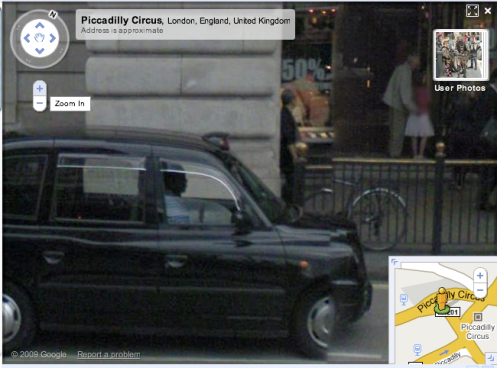

Another area of interest was Cafes, I think I was drawn towards the Cafe’s in particular because there were plenty of people sitting and engaging in conversations with each other. Again, there is something invasive about silently and secretly observing people without knowing. When we eat or drink, we are distracted from the world around us and are focused on the meal in front of us, putting us in a slight state of vulnerability, which may empower the voyeur.


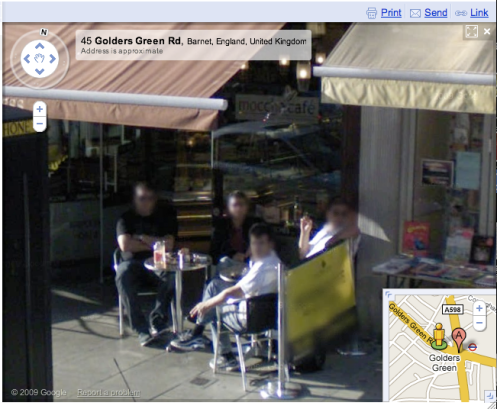
Finally, I was inspired by the few people i found sat on benches around London. This struck a personal chord as my own place of refuge and reflection is a bench in Gunnersbury Park, where I go without fail at least once a week to take stock of things and take time to relax and reflect. I know a few people who feel the same, and it is not uncommon to find certain benches dedicated to one or two particular people who may have spent a lot of time using it as a vantage point. Another thing I find draws me the benches is that they provide a view point that tucks you away on the sidelines, normally in a position perfect for people watching. I often enjoy watching the world and other people go by, usually unacknowledged by those being observed, therefore the thought of myself being focused on by an unseen eye would be quite off putting; “the observer being observed” . So, in that respect, I felt the bench theme would be the most interesting to focus on for the final artifact.
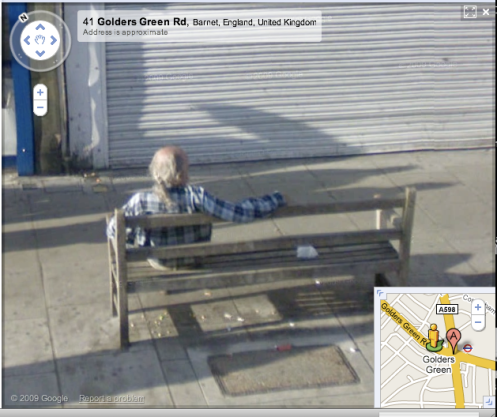

I also feel that the visual composition of the bench images were more aesthetically pleasing than the window and cafe shots, as they may be clearer to look at. I also like the artistic connotations provided by the bench compositions as more traditional artists have also focused on benches as subject matter for their paintings…
Claude Monet – “On a Garden Bench”
 5
5
Van Gogh – “The Stone Bench in the Garden of Saint-Paul Hospital”
 6
6
Theodore Robinson – “Garden Bench with Ferns”
 7
7
Eduoard Manet – “The Bench”
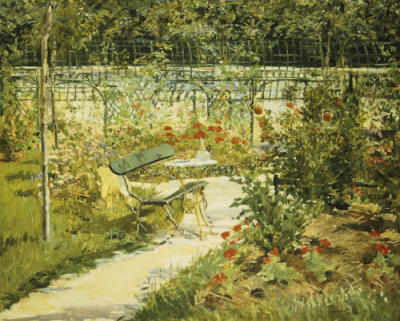 8
8
Now all i need to do is find enough images of oblivious people on benches to complete the artifact!
1. Thompson and Craighead, Weather Guage , UCL.ac.uk – http://www.ucl.ac.uk/slade/slide/imgs/weather_03.jpg
2. Thompson and Craighead, Wikipedia -http://en.wikipedia.org/wiki/Thomson_&_Craighead
3. Dziga Vertov, Eircom.net – http://homepage.eircom.net/~musima/historymotion/camera_files/citycamerax%5B1%5D.jpg
4. Richard Taylor : “Dziga Vertov- Defining Documentry Film” – http://209.85.229.132/search?q=cache:-lbEatdjCAAJ:https://segue.middlebury.edu/repository/viewfile/polyphony-repository___repository_id/edu.middlebury.segue.sites_repository/polyphony-repository___asset_id/1772951/polyphony-repository___record_id/1772952/polyphony-repository___file_name/Hicks.pdf+vertov+%2B+voyeurism&cd=3&hl=en&ct=clnk&gl=uk&client=firefox-a
5. Claude Monet , Awsome Art.biz – http://www.awesome-art.biz/awesome/images/medium-mon/Camille%20Monet%20on%20a%20garden%20bench.jpg
6. Van Gogh, VGGallery.com -http://www.vggallery.com/painting/f_0732.jpg
7. Theodore Robinson, 1st-Art-Gallery.com – http://www.1st-art-gallery.com/_site/paintings/77501-78000/77629/size3.jpg
8. Edouard Manet, Easy-art.com -http://images.easyart.com/i/prints/rw/en_easyart/lg/2/1/The-Bench–The-Garden-At-Versailles-Edouard-Manet-213294.jpg
Posted in Uncategorized


![citycamerax[1] citycamerax[1]](https://mcw3dhybrids.files.wordpress.com/2009/05/citycamerax1.jpg?w=497) 3
3









 5
5 6
6 7
7 8
8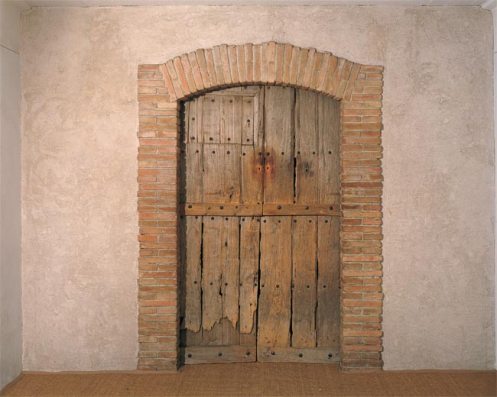





 1
1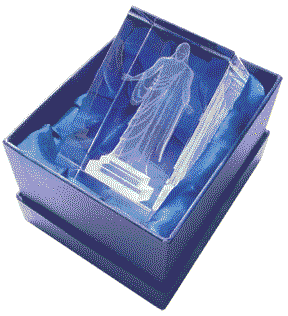 3
3 5. Stereoviewer
5. Stereoviewer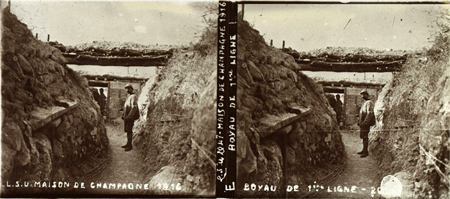
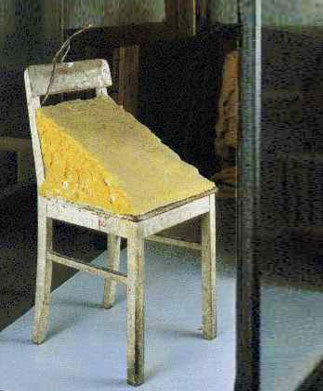 1
1 2
2 3
3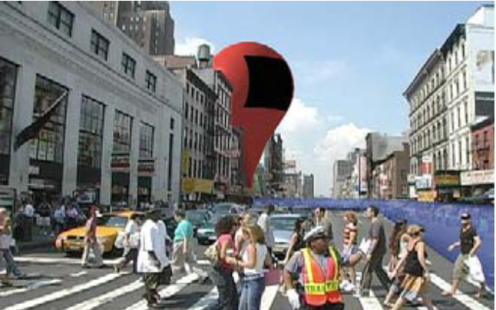 4
4